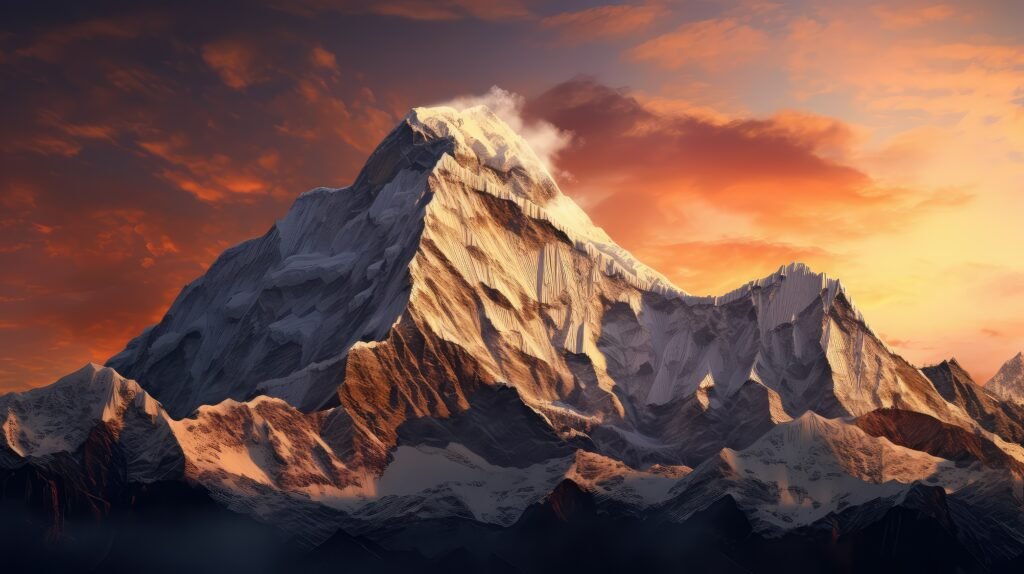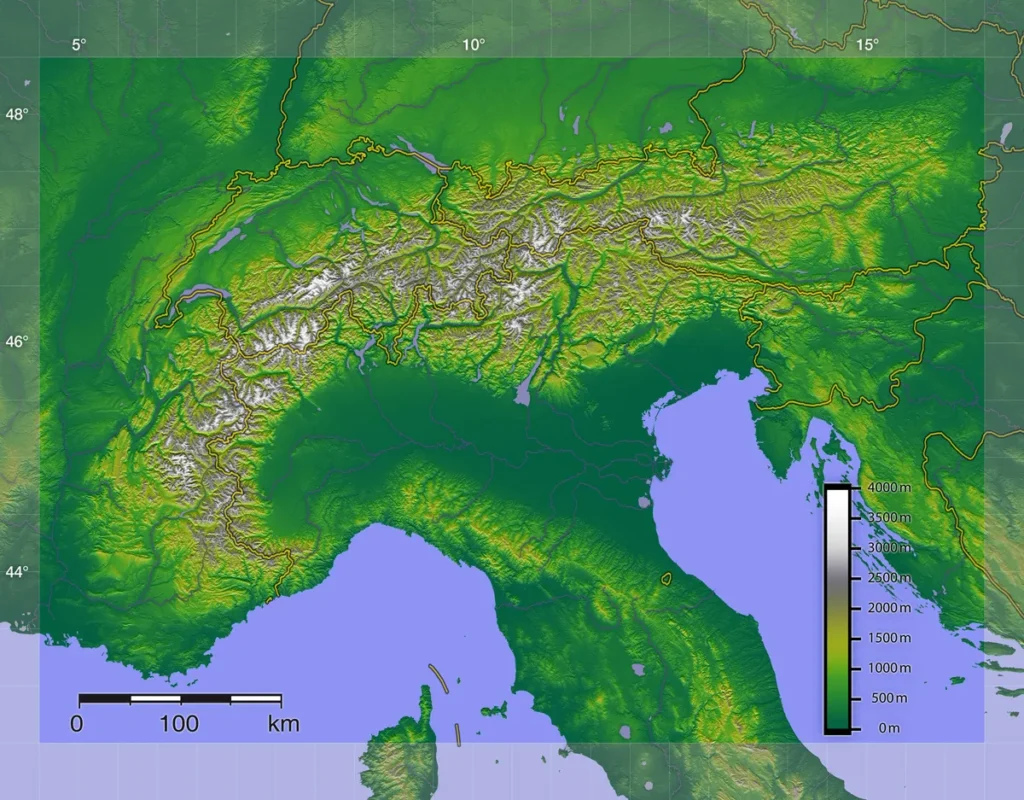Mountains are the beginning and the end of all natural scenery.” – John Ruskin
Introduction
Have you ever wondered what it would be like to stand atop one of Earth’s great mountain ranges, gazing over vast expanses of valleys, glaciers, and rugged peaks? The world’s greatest mountains have captivated explorers and adventurers for centuries, offering breathtaking views and harrowing challenges. But behind their beauty lies a world filled with both wonder and difficulty. From the towering Himalayas to the windswept Andes, Earth’s great mountain ranges are more than just geological features — they symbolize nature’s raw power and grandeur.
In this article, we’ll take a closer look at 10 mind-blowing wonders of Earth’s great mountain ranges, exploring their unique characteristics, their cultural significance, and the challenges those brave enough to conquer them face. We’ll also mention some of the most famous expeditions that have pushed human limits in these ranges.
10 of Earth’s Great Mountain Ranges:
1. The Himalayas – The Roof of the World
The Himalayas are arguably Earth’s most famous mountain range, home to the world’s highest peaks, including Mount Everest. Towering over Asia, this range has long been a site of spiritual and cultural importance. The Himalayas stretch across five countries: Nepal, India, Bhutan, China, and Pakistan, making them a critical geographical and cultural landmark.

Unique Features:
- Mount Everest is home to the highest point on Earth (29,032 feet).
- The source of major rivers like the Ganges and Brahmaputra.
- Rich in biodiversity, housing species like the snow leopard and red panda.
Also Read: Discover the epic 50 million-year journey of the Himalayas’ Formation
Expeditions:
Famous expeditions, such as Sir Edmund Hillary and Tenzing Norgay’s first successful ascent of Everest in 1953, have drawn adventurers from across the globe. However, the challenges here go beyond the sheer altitude. Avalanches, extreme cold, and altitude sickness are just a few dangers climbers face when exploring Earth’s great mountain ranges.
2. The Andes – The Spine of South America
The Andes are the longest mountain range in the world, stretching over 4,300 miles along the western coast of South America. They are a geographical marvel and home to ancient civilizations like the Incas. These mountains provide a natural habitat for unique wildlife and host extraordinary archaeological sites such as Machu Picchu.
Unique Features:
- World’s longest mountain range.
- Home to Machu Picchu, a UNESCO World Heritage Site.
- Contains Mount Aconcagua, the tallest peak in the Southern Hemisphere.
Expeditions:
Climbing Aconcagua is a dream for many mountaineers, but the thin air at its summit is a major challenge. Exploring the Andes also threatens earthquakes and volcanic activity, as the region is part of the Pacific Ring of Fire.
Also Read: Top 10 Tallest Mountains of North America
3. The Rockies – The Backbone of North America
The Rocky Mountains, often called The Rockies, stretch from Canada to New Mexico, forming a natural backbone for North America. Known for their stunning landscapes and diverse ecosystems, the Rockies are a favorite destination for hikers, skiers, and adventurers.

Unique Features:
- Includes Rocky Mountain National Park, a top U.S. destination for outdoor lovers.
- It is known for its spectacular wildlife, including elk, moose, and bears.
- The Colorado Rockies offer some of the best skiing in North America.
Expeditions:
The Lewis and Clark Expedition in the early 1800s is one of the most famous journeys through the Rockies. However, today’s explorers must still contend with challenges like treacherous weather conditions and rugged terrain.
4. The Alps – Europe’s Adventure Playground
Europe’s Alps symbolize natural beauty. They stretch across eight countries, including France, Switzerland, and Austria. Their snow-capped peaks, green valleys, and alpine lakes have made them one of the world’s greatest mountain destinations for tourism and adventure sports.
Unique Features:
- Home to Mont Blanc, the tallest peak in Western Europe.
- Offers a year-round adventure scene with skiing, hiking, and climbing.
- A key destination for winter sports and alpine tourism.

Expeditions:
Scaling Mont Blanc has long been a draw for climbers, though unpredictable weather and avalanches pose significant risks. These mountains continue to challenge adventurers who come to explore one of Earth’s great mountain ranges.
5. The Atlas Mountains – North Africa’s Hidden Gem
The Atlas Mountains stretch across North Africa, primarily in Morocco, Algeria, and Tunisia. Known for their stark beauty, they dramatically contrast the surrounding deserts.
Unique Features:
- Divided into several subranges, including the High Atlas and Anti-Atlas.
- Rich in geological diversity, offering spectacular gorges and valleys.
- A key cultural hub for the indigenous Berber people.
Expeditions:
Many adventurers explore the High Atlas region, climbing Mount Toubkal, North Africa’s tallest peak. However, the region’s harsh desert conditions and isolated nature can be challenging.
6. The Pyrenees – Between Two Nations
The Pyrenees form a natural border between France and Spain, offering a mix of stunning landscapes and rich biodiversity. The Pyrenees are known for their wild beauty, from green valleys to rugged peaks.
Unique Features:
- A key geographical divide between the Iberian Peninsula and the rest of Europe.
- Famous for its thermal springs and natural parks.
- Offers a variety of adventure activities like hiking and skiing.
Expeditions:
Explorers here are drawn to famous trails like the GR10, which traverses the entire French side of the Pyrenees. Challenges include rapidly changing weather and the steep, jagged terrain.
| Mountain Range | Highest Peak | Length (miles) | Famous Expedition |
| Himalayas | Mount Everest | 1,500 | Hillary & Norgay, 1953 |
| Andes | Aconcagua | 4,300 | Climb of Aconcagua |
| Rockies | Mount Elbert | 3,000 | Lewis and Clark Expedition |
| Alps | Mont Blanc | 750 | First ascent of Mont Blanc |
| Atlas Mountains | Mount Toubkal | 1,600 | High Atlas Expeditions |
| Pyrenees | Pico de Aneto | 305 | Pyrenean Trail (GR10) |
7. The Sierra Nevada – Spain’s Southern Range
Spain’s Sierra Nevada range offers a striking contrast to the Mediterranean climate surrounding it. Known for its high peaks and snowy winters, it’s a favorite for winter sports enthusiasts.
Unique Features:
- Includes Mulhacén, the highest peak in mainland Spain.
- Proximity to historic cities like Granada.
- Offers skiing opportunities just hours from the Mediterranean coast.
8. The Ural Mountains – The Border Between Europe and Asia
The Ural Mountains serve as the natural boundary between Europe and Asia. Rich in minerals and history, these mountains hold a unique place in geography and culture.
Unique Features:
- Rich in mineral deposits like platinum and gold.
- Spans from the Arctic Ocean to the Ural River.
Expeditions:
Explorers must contend with the cold climate, dense forest, and rugged terrain that dominate much of the Ural Mountains.
9. The Carpathians – Eastern Europe’s Wilderness
The Carpathians span several Eastern European countries, offering some of the most untouched wilderness in Europe.
Unique Features:
- Home to the largest population of brown bears in Europe.
- Steeped in folklore and legends, including the Dracula myth.
Expeditions:
Hiking the Carpathians is a popular activity, though explorers should be prepared for the region’s wild nature, which includes large predators and unpredictable weather.
10. The Great Dividing Range – Australia’s Hidden Marvel
Stretching along the eastern coastline of Australia, the Great Dividing Range is the world’s third-longest mountain range. More famous ranges often overshadow it, but it holds great ecological significance.
Unique Features:
- Rich in biodiversity, from tropical rainforests to snow-capped peaks.
- Plays a critical role in Australian water systems, feeding major rivers.
Key Takeaways
- Earth’s great mountain ranges are both awe-inspiring and formidable.
- Each range offers unique landscapes, challenges, and cultural significance.
- These mountains continue to draw explorers and adventurers worldwide, from the towering Himalayas to the vast Andes.
Conclusion
Exploring Earth’s great mountain ranges is more than a journey through majestic landscapes; it’s an experience that connects us with the raw power and beauty of nature. Each range, from the Himalayas’ towering peaks to the lush valleys of the Carpathians, holds a unique story shaped by geography, wildlife, and cultural significance. However, these wonders also present formidable challenges — extreme weather, high altitudes, and rugged terrains that test even the most experienced adventurers.
These mountains offer us opportunities for exploration and adventure and teach us the importance of respecting and protecting our natural environment. Whether we aim to climb these peaks or simply marvel at their beauty from afar, they remind us of our place in the world and the extraordinary diversity that our planet holds. So, are you ready to explore Earth’s great mountain ranges and uncover their mysteries?
What makes Earth’s great mountain ranges unique?
Each mountain range offers distinct landscapes, biodiversity, and cultural significance, making it a unique destination for adventure and exploration.
Which is the highest mountain range on Earth?
The Himalayas are the highest, featuring Mount Everest, the tallest peak globally, at 29,032 feet above sea level.
Which is the longest mountain range in the world?
The Andes are the longest mountain range, stretching over 4,300 miles along the western coast of South America.
What challenges do mountaineers face in the Andes?
The Andes present challenges like high altitudes, thin air, extreme weather, and the threat of volcanic activity along the mountain range.
Why are the Alps popular for winter sports?
The Alps provide excellent skiing, snowboarding, and mountaineering conditions, with many resorts and facilities dedicated to winter sports enthusiasts.
What is the significance of the Atlas Mountains?
The Atlas Mountains are vital for their geological diversity and are culturally significant to the indigenous Berber people of North Africa.
How do the Rockies impact North America’s environment?
The Rockies influence North America’s ecosystems and water systems, providing habitats for diverse wildlife and outdoor recreation and tourism resources.





